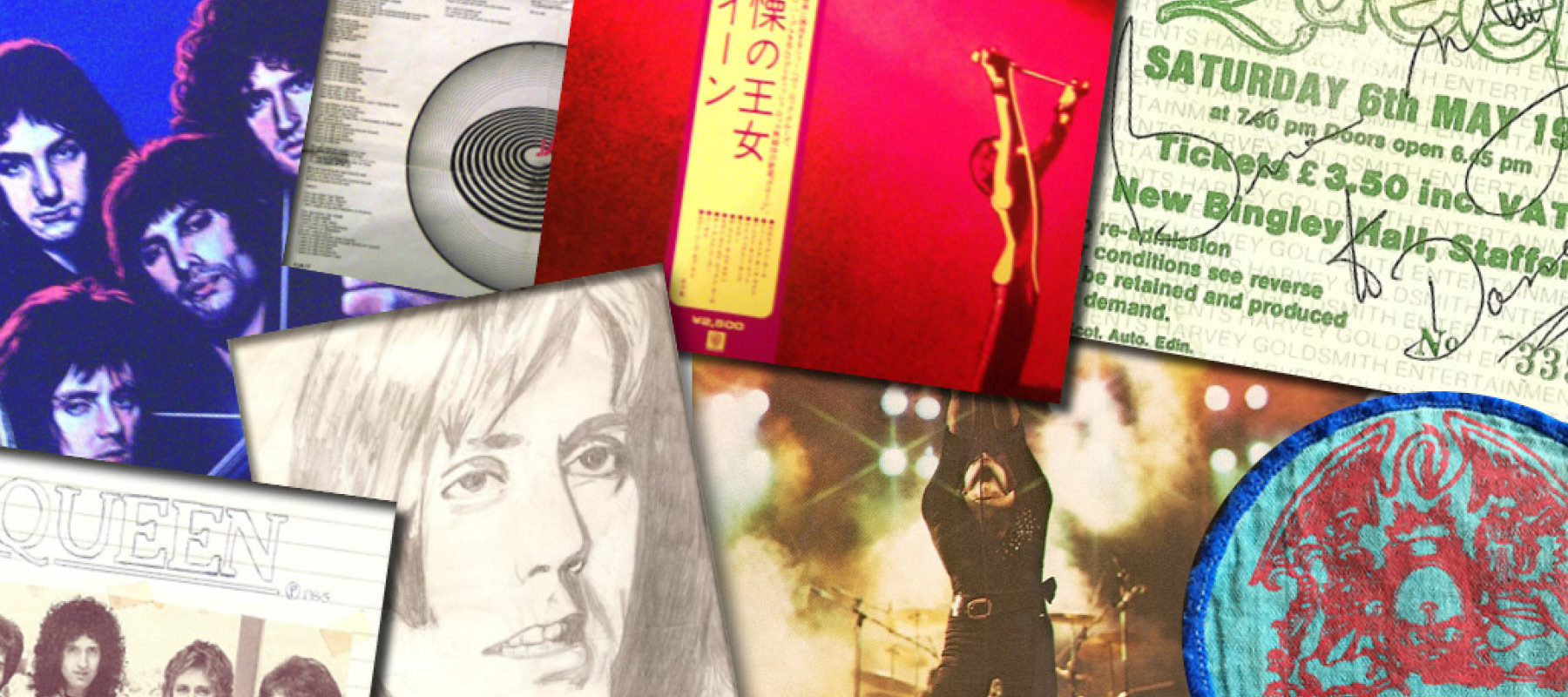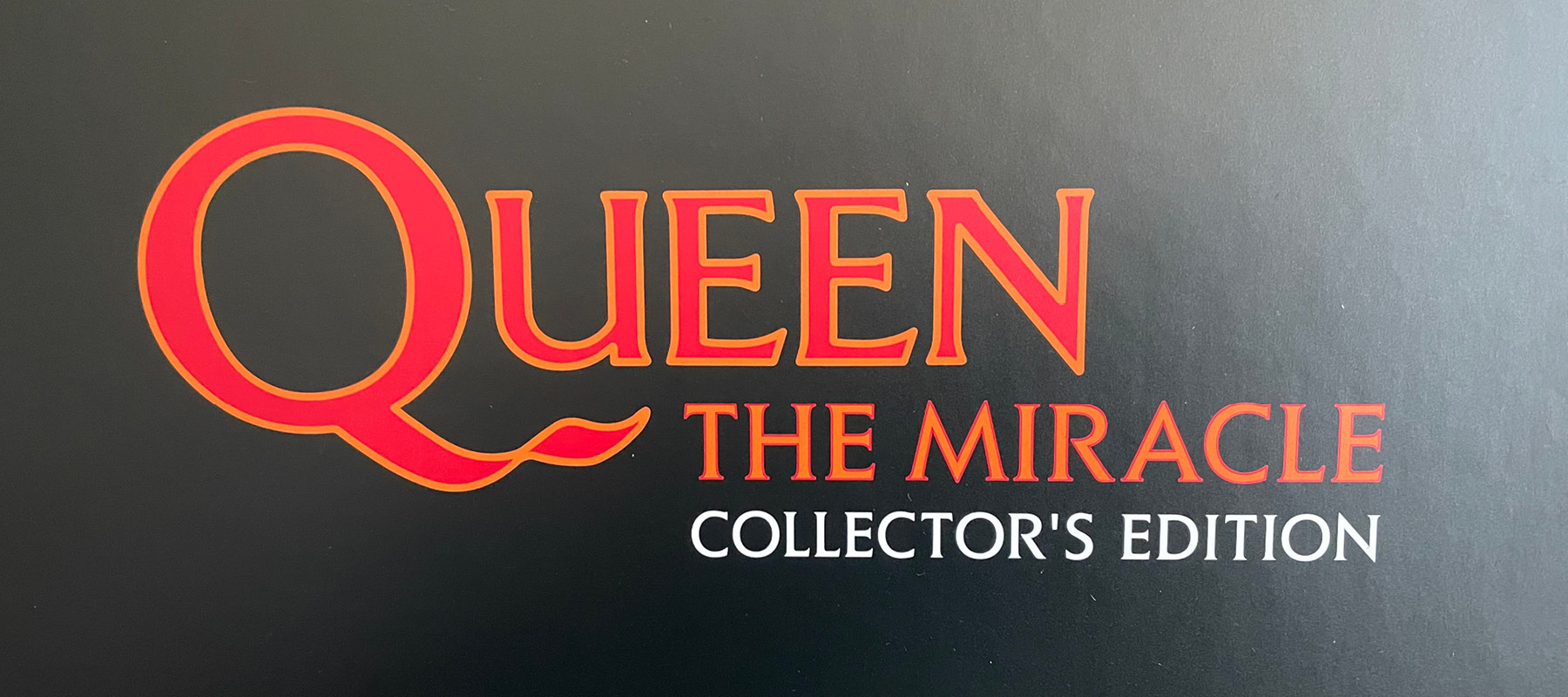Queen I Review

“Queen I is the debut album we always dreamed of bringing to you.” Brian May and Roger Taylor, 2024
The Queen I box set, which was released in October 2024, is the third Queen studio album to get the Collector’s Edition treatment following on from the News of the World fortieth-anniversary release in 2017 and the Miracle box set in 2022.
It appeared fifty-one years – why not fifty? – after the debut album first came out (on 13 July 1973, to be precise). What sets this Collector’s Edition apart from the other two is that it is a full remix – the word “rebuild” appears in the publicity blurb – of the original album, hence the decision by Brian and Roger to re-title it ‘Queen I’ (as opposed to the original title, ‘Queen’).
The box set includes plenty of other goodies for fans to enjoy as well, but I rather suspect (and everything I have seen on various YouTube channels in the last few months seems to confirm this) that the new mix will be the main topic of conversation among Queen aficionados.
Here is what Roger has said:
Essentially with the Queen I box set we’ve made the actual album sound the way we wanted it to sound, using the techniques that we have now. We’ve made the drums sound like they should sound, and the overall sound of it is better, the mixes are better. So it’s been a delight to improve it, to bring it up to where we wanted it to be.
So – is the remix/rebuild any good?
We had an early clue with the release of the track The Night Comes Down as a single (if that is what they are still called). I thought it was absolutely terrific, but one talking head after another quickly popped up on YouTube to voice their unhappiness and to complain in particular about the use of pitch-correction on Freddie’s vocals. Well I am certainly not a music production or singing expert (I think I sing like an angel but everyone else says I am completely out of tune) but I can’t make out any difference in the vocals. If pitch-correction has been used it certainly doesn’t spoil my listening experience.
What I can hear clearly now – and this is typical of the experience of listening to the album as a whole – are Freddie’s ‘oh-oh’ and ‘mmm’ ad-libs, over the top of the three harmonised voices, at 3:04 and 3:19 respectively. Going back to the original version again, they are indeed there but just not distinct enough for me to have been conscious of them before. Perhaps it is the new mix or perhaps it is Dolby Atmos helping us hear things that were buried in the original mix – or more likely a combination of the two.
Anyway, the new mix reanimates the track and enables the listener to experience a familiar song in a new and exhilarating way. Brian’s acoustic guitar is so intense as it crescendoes, and – listening more closely to Roger’s drumming – I had never previously registered just how unconventional his fills are (reminding me, oddly enough, of Ringo’s drumming on Ticket to Ride).
As I say, the same applies to the album in its entirety: the whole thing – but particularly the drums and the guitars –sounds fresh and fabulous. There is an energy, a vibrancy and a heaviness to the songs that is somehow absent on the original release. Yes, there has been knob-twiddling going on in the production room, but it is tin-eared to claim that it doesn’t sound great. As Phil Aston commented on his Now Spinning magazine YouTube channel, sceptical Queen fans should give the new mix a proper listen – and with an open mind – before condemning it.
As for the argument that it is sacrilege to mess with the original recordings, I don’t have an issue with using new technology to overcome previous production limitations or to correct decisions taken at the time about how the album should sound. (It is worth reading what Geddy Lee writes in his autobiography My Effin’ Life about his and Alex Lifeson’s reaction on first hearing a playback of their debut album – “crestfallen”.)
From the opening notes of Keep Yourself Alive – you can imagine Brian’s sixpence attacking those strings – Queen I is a joy to listen to. Every track has its standout moments – those earth-shattering electric-guitar breaks on Doing All Right; Roger’s drumming on Great King Rat, Liar and Modern Times Rock ‘n’ Roll; the final section of Son and Daughter (from roughly 2:20 onwards) that sounds so much more like the version they were playing on stage.
But two stars in this firmament – two songs that I have long thought are often overlooked and underappreciated – shine brightest for me.
The first is Jesus – one of Queen’s earliest songs and an early home for some extended guitar wizardry from Brian. Jesus is a good example of the ludicrous way Queen allocated songwriting credits before 1989. Brian has previously said (I think talking about the song Liar) that Freddie insisted that whoever wrote the lyrics ‘owned’ the song. And yes, it is highly likely that Freddie wrote the lyrics of Jesus (the religious theme was typical of his lyric-writing at this time) and perhaps even the basic song structure, but I would need some convincing that it wasn’t Brian who developed and arranged the entire guitar passage.
And the second is My Fairy King, which just sounds so achingly plaintive and beautiful – “Someone, someone – has drained the colour from my wings / Broken my fairy circle ring…” Some of the seeds of Bohemian Rhapsody may be found in The March of the Black Queen on Queen II but, with the frequent changes of pace and the air of melancholy, they are there in My Fairy King as well.
And for the first time ever I can more or less make out what Freddie is singing. Even when the lyrics were officially printed for the first time (as part of the 1994 Remasters series), some of the lines didn’t make much sense to me. These lines are from the 2024 printed lyrics:
They turn the milk into sour
Like the blue of the blood of my veins
(Why can’t you see it?)
Fire burn in hell with the cry of screaming pain
(Son of heaven set me free and let me go)
Sea turn dry no salt from sand
Seasons fly no helping hand
Teeth don’t shine like pearls for poor men’s eyes – no more
The vinyl version of the Miracle re-release (but not, frustratingly, the CD) made a big thing of restoring the dropped song Too Much Love Will Kill You back to its ‘rightful’ place on side one, and the Queen I release does the same with Mad the Swine, apparently left off the original release after a disagreement between the band and producer Roy Thomas Baker.
Mad the Swine had already seen the light of day as one of the additional tracks on the twelve-inch release of the single Headlong in 1991. Musically, it is lighter and more upbeat than the rest of the album, though its story of a saviour (Jesus, presumably) is – as noted above – very much in line with Freddie’s lyrical preoccupations at the time. I commented in my Queen Song Ranking that I was intrigued where in the album’s running order the track would have gone. Well, now I know: between Great King Rat and My Fairy King on side one.
CD2 is the – cliché klaxon – ‘legendary’ De Lane Lea demos (ie the first ever tracks they recorded in a professional recording studio, between December 1971 and January 1972). I was a bit surprised that these demos are on CD2 because, apart from the length of the CD (it is only five tracks and less than thirty minutes long) they are already available on the 2011 deluxe edition of the first album.
However, the tracks that appeared in 2011 were taken from a scratchy acetate in Brian’s private collection. The versions included here have been restored and remixed from the original multi-tracks. They sound great.
The band themselves always preferred the De Lane Lea versions – “…we have always felt that the performances actually have more spontaneity and sparkle, as well as the benefit of more natural sounds” (to quote some of the info in the box set) – to what appeared on the debut album in 1973. The curious fan can now make their own mind up by comparing and contrasting the 1973 version of, say, Keep Yourself Alive with the De Lane Lea demo and the 2024 mix.
CD3 (which I would have expected to be CD2) is called Queen I Sessions, even though some of what we hear is from the De Lane Lea sessions as well as from Trident Recording Studios where the Queen album was recorded.
The Sessions CDs were highlights of both the News of the World and the Miracle releases and the Queen I Sessions CD doesn’t disappoint either. Listening to it is a fascinating fly-on-the-wall experience; we are ear witnesses to a band more or less at the very beginning of their recording career, learning how to record songs in a professional environment.
Note, for example, the band’s efforts to keep in time (Freddie does a lot of counting) and the not infrequent slip-ups. Perhaps we shouldn’t be surprised, given that much of the recording of the first album was apparently done during ‘down time’ in the middle of the night. The camaraderie between the four of them shines through too. My favourite (said by Brian): “It’s you, Bulsara! It’s you that’s flat, you bastard!”
CD4 consists of backing tracks – rarely a mix I reach for by choice – and CD5 is Queen at the BBC, eleven performances of songs recorded (or part-recorded – they sometimes just added vocals and guitar to backing tracks due to time constraints) during four BBC sessions between February 1973 and April 1974. These have all been previously released, but it is nevertheless a fantastic addition to the box set if you don’t own Queen On Air.
CD6 are live tracks. Five of them, recorded at the London Rainbow on 1 March 1974 on the Queen II tour, are already available, but then we get four gems that should be of real interest to any Queen fan.
Two of them were recorded (presumably from the soundboard) in San Diego on 12 March 1976, the final date of the North American leg of the A Night at the Opera tour. Neither has appeared on any official Queen live album. One of them is Doing All Right and the other is Hangman, a song that was often played live in 1973 and occasionally thereafter but was never recorded in the studio.
The other two tracks are from the band’s very first gig in London, on 23 August 1970, at Imperial College (ie pre-John Deacon’s arrival). One is a version of Jesus (which they had stopped playing live by 1973, Brian’s solo being incorporated instead in an extended Son and Daughter) and the other is a cover of the Bo Diddley song I’m a Man, which was also played as an encore on some nights during their 1977 European tour.
The sleeve notes state that the tracks were included for their historic significance and “do not represent the usual fidelity of professional live recordings”. Well yes, but all four tracks are well worth a listen.
As well as the six CDs and a vinyl copy of the Queen I album, there is also a 108-page book. I was critical of the book that accompanied the Miracle box set, but this one doesn’t disappoint (as long as you don’t mind that some of the 108 pages consist of a single line from a song or a quote from a band member). It is packed with images of memorabilia such as handwritten lyrics and there are plenty of rare photographs of the band at work and play, many of them taken by a friend of theirs, Douglas Puddifoot, who supplied many of the photos that were used on the back cover of the original album.
Not part of the box set but of note are six short promotional videos released on the official Queen YouTube channel. They are worth a watch, particularly Episode 5 in which Brian explains how he had originally created the front cover from a Puddifoot photo (which is in the book) and then recreated it so it could be digitised for the Queen I re-release.
He also explains the reference in the original credits to ‘Deacon John’ – not, it seems, John’s idea. The credits are missing from the 2024 version of the album cover and the inner sleeve credits refer to ‘John Deacon’.
So, what’s missing? I would have liked to have heard more from the 1970 Imperial College gig and the full version of the 1973 London Golders Green concert originally broadcast on BBC Radio 1. A medley of rock ‘n’ classics was omitted when it appeared on the Queen On Air release in 2016, though perhaps there were copyright issues.
Completists will probably also rue the omission of the edited version of Liar released as a single in the USA by Elektra Records in February 1974 to coincide with their US tour supporting Mott the Hoople. There is also a 1975 re-recording of Keep Yourself Alive that featured on the 2011 deluxe edition of the A Night at the Opera album.
To conclude, then, this is my favourite of the three Queen box-set releases. It certainly isn’t cheap but for those on a budget there are less expensive alternatives. Queen I is available as a standalone CD, and there is also a two-CD deluxe edition featuring the new mix and the Sessions CD. The De Lane Lea sessions were also issued on vinyl for Record Store Day 2025 (though not being a vinyl buyer any more I have no idea how long this product will be available for).
Brian has indicated that he would like to do something similar with Queen II. Who knows whether that will actually happen but if it ever does it will be a must-have. Queen II is so densely layered that it would undoubtedly benefit from Dolby Atmos and a general refresh. That said, as I have written in my blog about Live Killers [link below], there is a gigantic pizza oven-shaped hole in their catalogue of rereleases still waiting to be filled.







